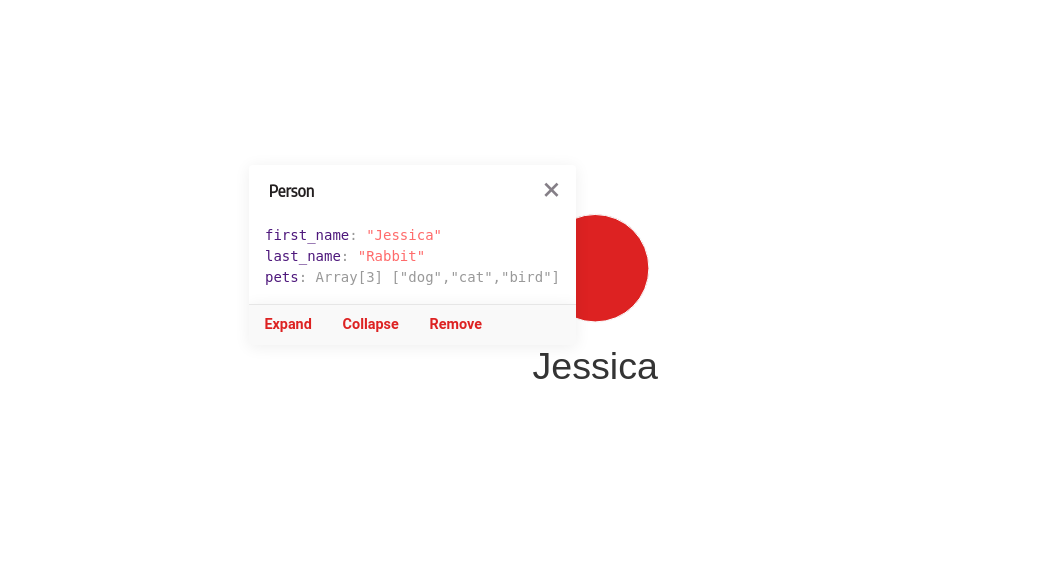Loading from JSON format
A JSON file is a file that stores simple data structures and objects in JavaScript Object Notation format, which is a standard data interchange format. The data you want to import to the database is often saved in JSON format, and you might want to import parts of that data as graph objects - nodes or relationships.
Data can be imported using query modules implemented in the MAGE library:
json_utilquery moduleimport_utilquery module.
The difference is that json_util.load_from_path() has no requirements about
the formatting of data inside the JSON file, while the import_util.json()
procedure requires data to be formatted in a specific way. It is the same
formatting the export_util.json() procedure generates when it's used to export
data from Memgraph into a JSON file.
JSON file data format required by the import_util.json() procedure
[
{
"id": 6114,
"labels": [
"Person"
],
"properties": {
"name": "Anna"
},
"type": "node"
},
{
"id": 6115,
"labels": [
"Person"
],
"properties": {
"name": "John"
},
"type": "node"
},
{
"id": 6116,
"labels": [
"Person"
],
"properties": {
"name": "Kim"
},
"type": "node"
},
{
"end": 6115,
"id": 21120,
"label": "IS_FRIENDS_WITH",
"properties": {},
"start": 6114,
"type": "relationship"
},
{
"end": 6116,
"id": 21121,
"label": "IS_FRIENDS_WITH",
"properties": {},
"start": 6114,
"type": "relationship"
},
{
"end": 6116,
"id": 21122,
"label": "IS_MARRIED_TO",
"properties": {},
"start": 6115,
"type": "relationship"
}
]
To be able to call the procedures, you need to install MAGE and load query modules.
If you can choose the format of the data you want to import, the fastest way to import data into Memgraph is from a CSV file using the LOAD CSV clause.
Examples
Below, you can find two examples of how to load data from a JSON file depending on the file location:
Load JSON from a local file
To import data from a local JSON file, you can use the
json_util.load_from_path() procedure
or import_util.json() procedure.
The difference is that json_util.load_from_path() has no requirements about
the formatting of data inside the JSON file while the import_util.json()
procedure does. It is the same formatting the export_util.json() procedure
generates when it's used to export data from Memgraph into a JSON file.
json_util.load_from_path() procedure
The json_util.load_from_path() procedure takes one string argument (path)
and returns a list of JSON objects from the file located at the provided path.
Let's import data from a file data.json with the following content:
{
"first_name": "Jessica",
"last_name": "Rabbit",
"pets": ["dog", "cat", "bird"]
}
If you are using Docker to run Memgraph, you will need to copy the files from your local directory into the Docker container where Memgraph can access them.
To create a node with the label Person and first_name, last_name and pets
as properties, run the following query:
CALL json_util.load_from_path("path/to/data.json")
YIELD objects
UNWIND objects AS o
CREATE (:Person {first_name: o.first_name, last_name: o.last_name, pets: o.pets});
After you execute the above query, the graph in Memgraph should look like this:

import_util.json() procedure
To find out how to import data with the import_util.json() procedure check
out the MAGE documentation.
Load JSON from a remote address
To import data from a remote JSON file, use load_from_url(url) procedure that
takes one string argument (url) and returns a list of JSON objects from the
file located at the provided URL.
For example, at "https://download.memgraph.com/asset/mage/data.json", you can
find the following data.json file:
{
"first_name": "James",
"last_name": "Bond",
"pets": ["dog", "cat", "fish"]
}
To create a node with the label Person and first_name, last_name and
pets as properties from the data.json file. You can run the following query:
CALL json_util.load_from_url("https://download.memgraph.com/asset/mage/data.json")
YIELD objects
UNWIND objects AS o
CREATE (:Person {first_name: o.first_name, last_name: o.last_name, pets: o.pets});
After you run the above query, the graph in Memgraph should look like this:

To load JSON files from another local or remote location, just replace the argument of the procedure with the appropriate path or URL. If you want to create a different kind of graph, you need to change the query accordingly. To learn more about querying, check out the Cypher manual.